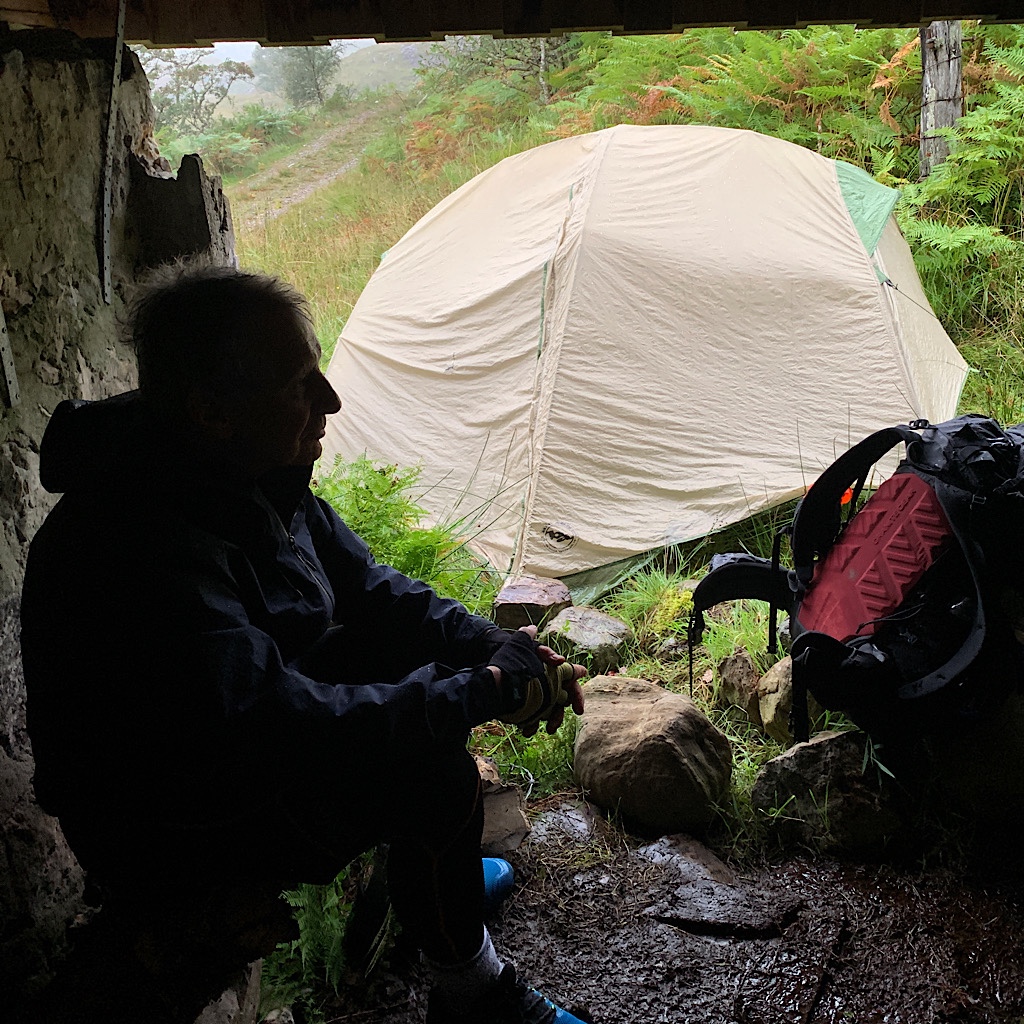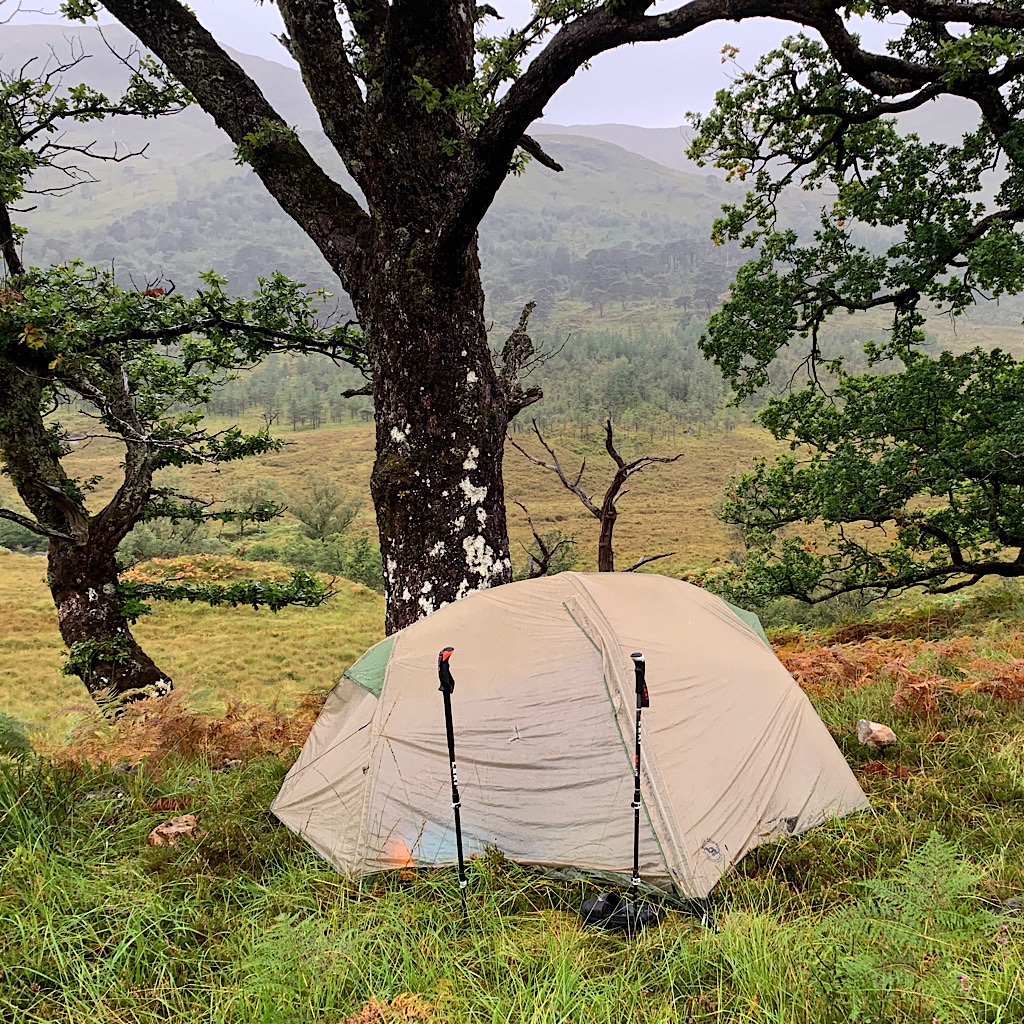
The sun is out for an auspicious beginning. I sleep well and no jet leg seems to linger as I get my phone set to save battery, swirl the covid swab deep in my throat and nose. then pack the bag, teaching Ted to shove everything into his Granite Gear so we can close it.
It’s a huge breakfast of muesli, toast, eggs with orange yolks, mushrooms, tomato and baked beans – I don’t entirely understand the bean bit.
We stop at the post box on the way back into town, to a store where we arranged to park for the three weeks we’re gone. My hiking friend Ted is a worrier and checked three times that it was ok. But on the fourth, just as we’re leaving, the manager comes to tell us no.
I guess being a bit of a worrier isn’t such a bad thing.
I speak to the manager as steam starts to come out of Ted’s ears, explaining we had been told yes and will be late for our privately arranged ferry ride – oh, and I did come all the way from America.
He relents, realizing the miscommunication will really mess things up, then warns us someone needed to be “helied” out of a river she tried to cross, but found herself stuck in.
“Don’t be in a hurry and plan to wait out the spate.” He warns us as we walk quickly towards the dock, getting stuck behind a fence briefly near the McDonald’s.
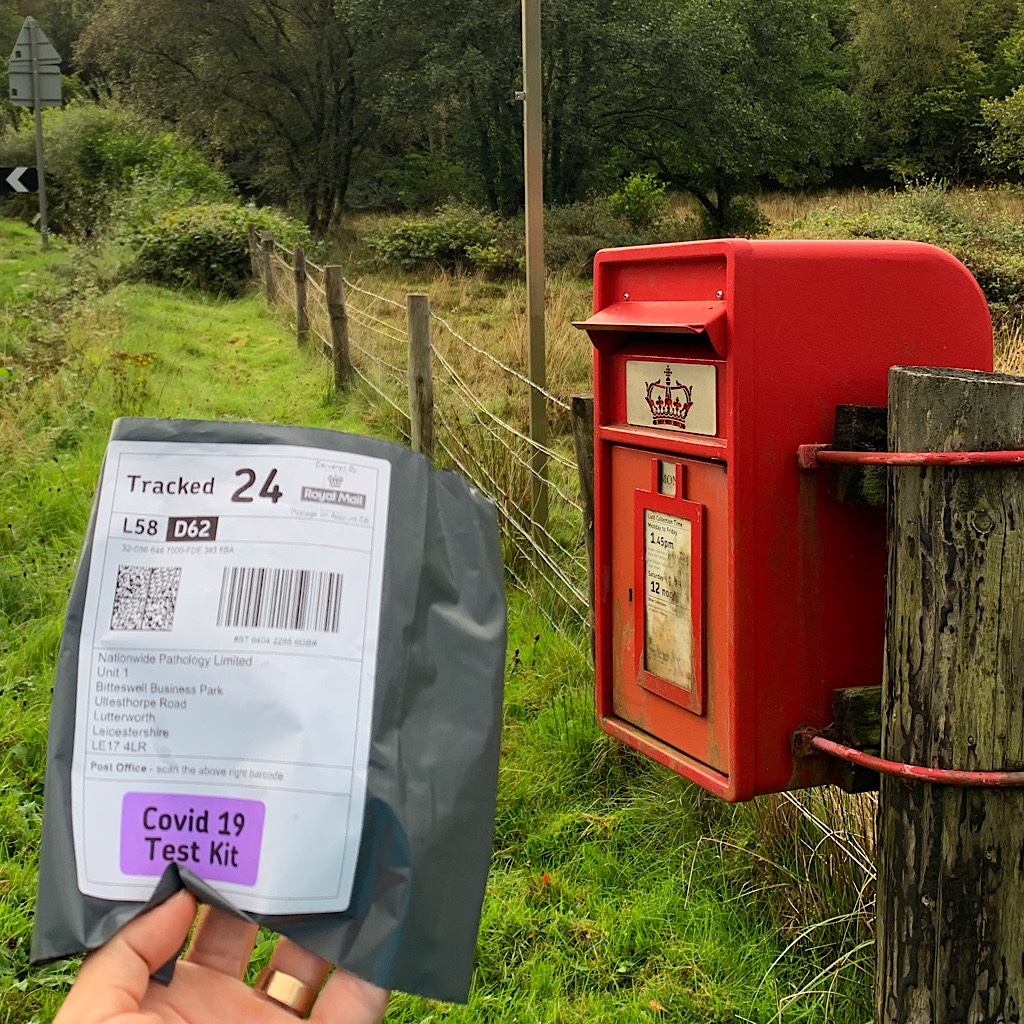
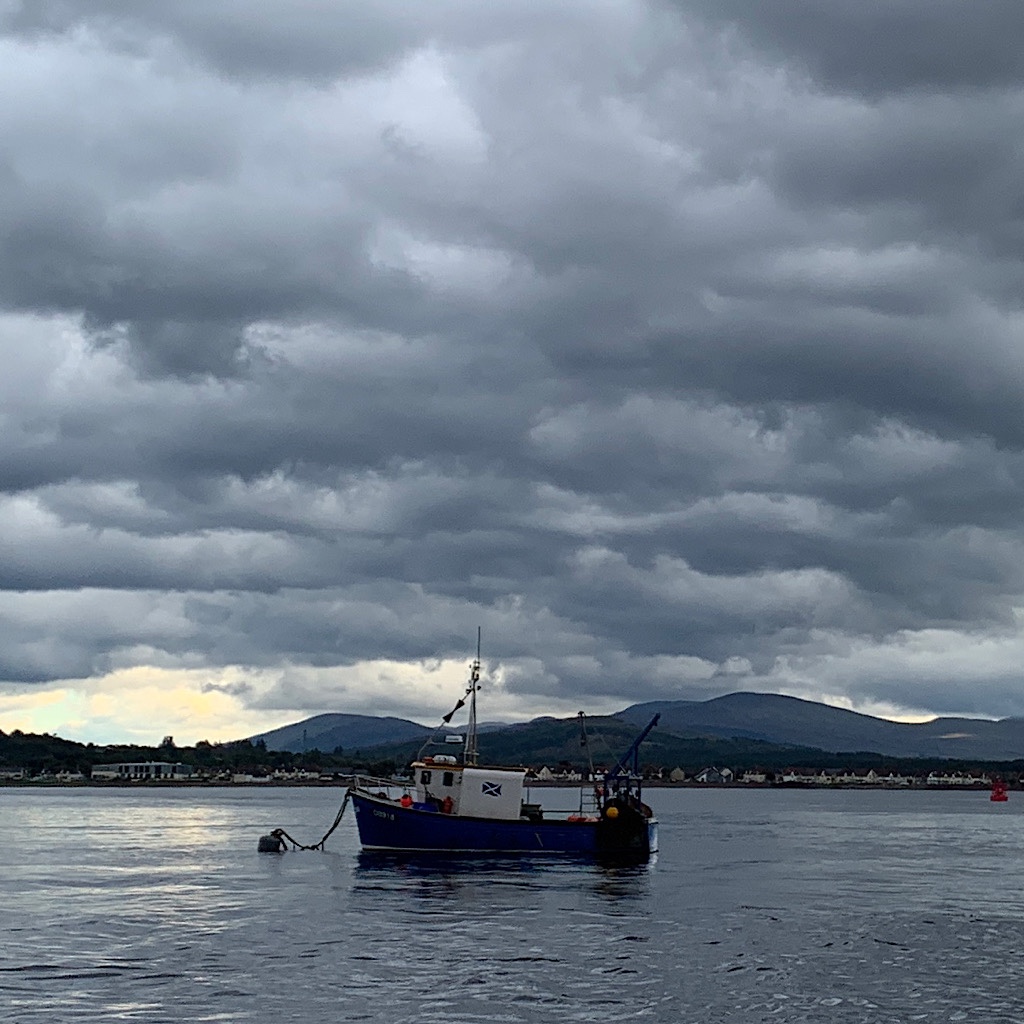
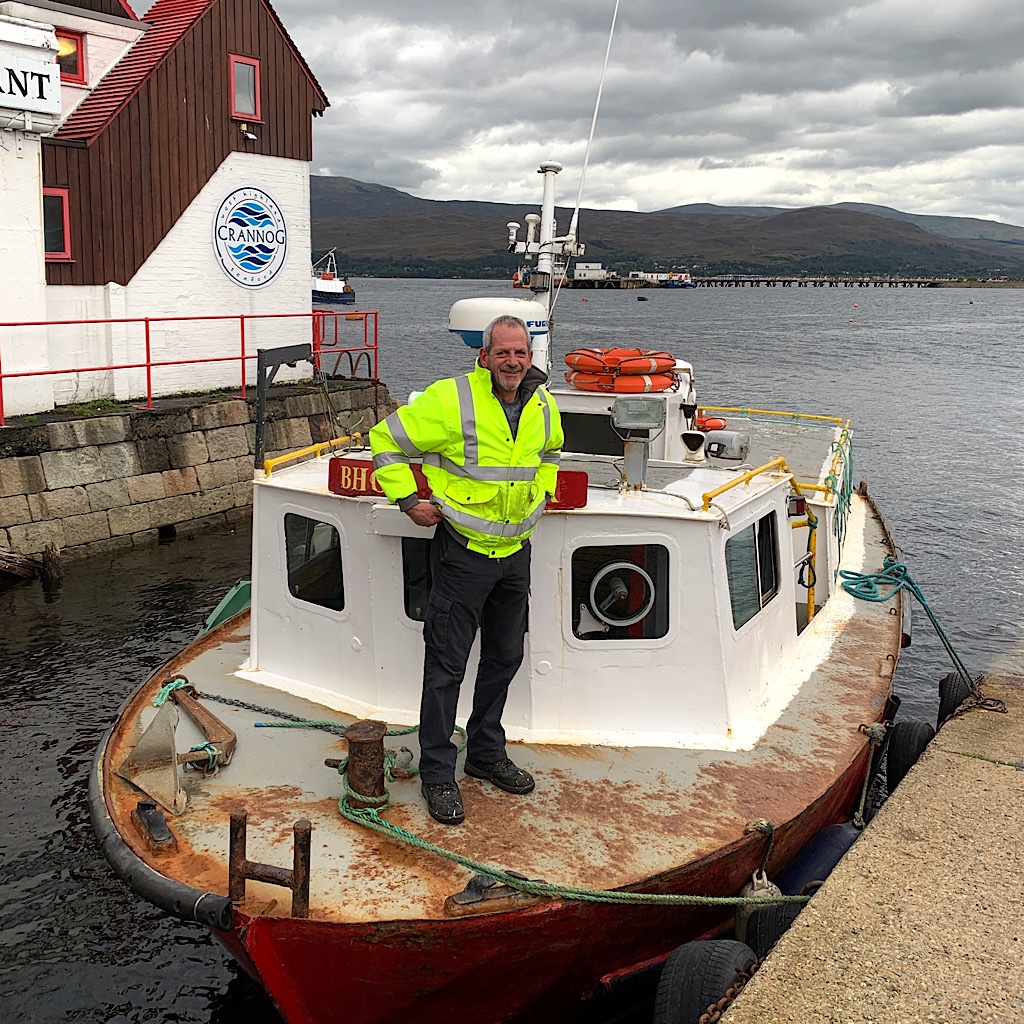
Pat meets us with his tiny boat. I thought he was a fisherman, but Ted spies benches underneath. He had to hire Pat especially for us since Sunday must be a day of rest for the tour across Loch Linnhe where the track begins.
There’s barely any chop as we chug out into the long thin loch. Scots call the long arms of the sea, lakes, but in fact they’re fjords, faults in the land caused by the colliding of continents 430 million years ago and finally, a hollowing out by glaciers. Linnhe is the longest, with the ancient volcano, Ben Nevis, towering above.
Sun glows through mist and momentary openings in the clouds, adding silver to the gray day. Across is Camusnagaul, which means Bay of the Foreigners and the Ardgour Peninsula. The first part of the route to the northernmost point in the UK, heads straight south on road along the loch, one rushing stream and waterfall after another tumbling down on our right and finding its way out to our left amidst thick ancient and gnarled oak trees, their leaves turning yellow.
Moss is everywhere, reminding us it may be dry now but not for long, and gorse, a prickly bush the Scots took to New Zealand nearly destroying its flora as the invasive spread.
It’s so easy we can talk most of the way, turning west at a pile of painted rocks and heading into Cona Glen. It’s still easy to walk track next to a rushing river of rapids and falls. A few rickety bridges can take one to the other side, but we have little reason to go.
Oak give way to ancient Caledonian Pine with smooth trunks and an almost bonsai look. We stop for lunch on a log, then filter water at a side stream and down a liter of electrolytes.
It’s humid and warm. Ted is in short sleeves and I’m sweating, enjoying the wind at my back. We’re close to the river, then pull above it only to return, the glen surrounded by tall, rocky hills. Our start is perfect.
We meet two walkers who tell us they walked to Cape Wrath last year and suggest we unhook our packs when we cross the rivers, in case we fall in and want to avoid getting held under water by the weighty obstruction.
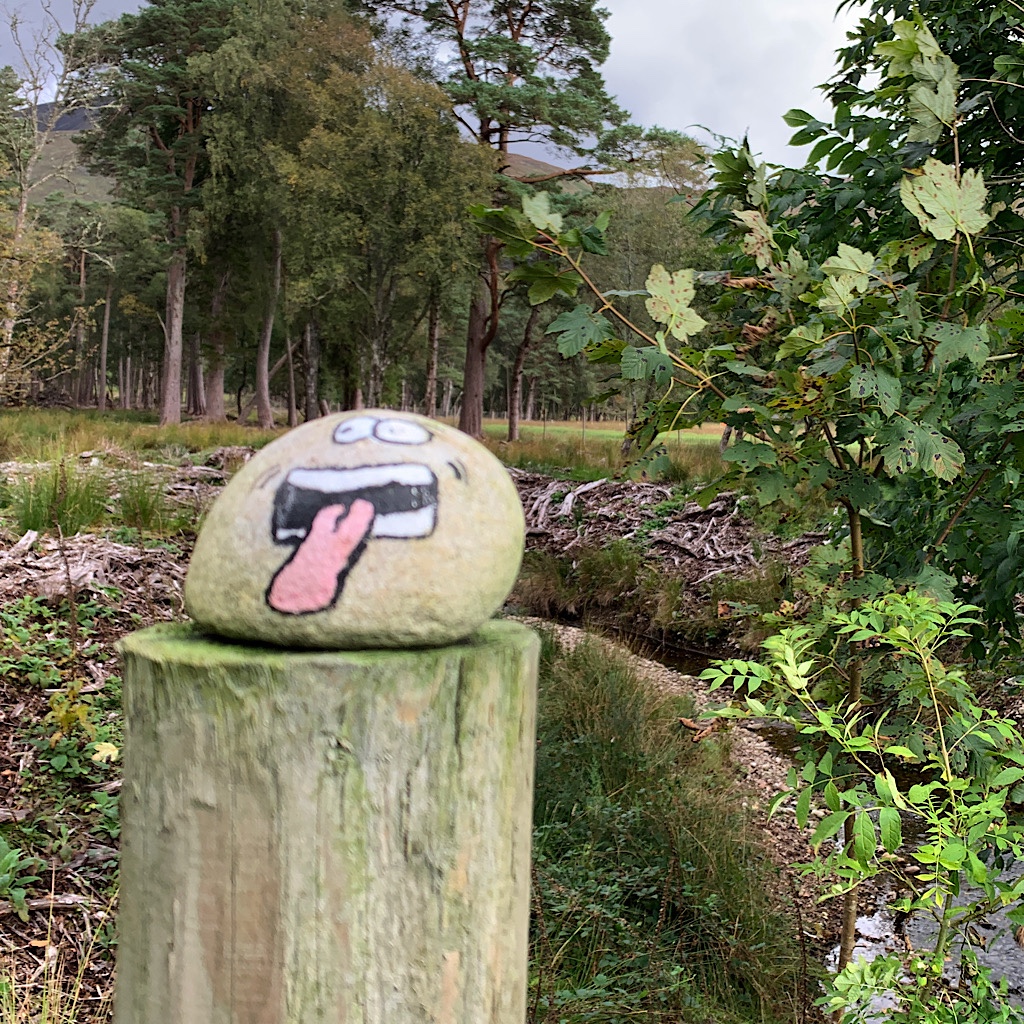
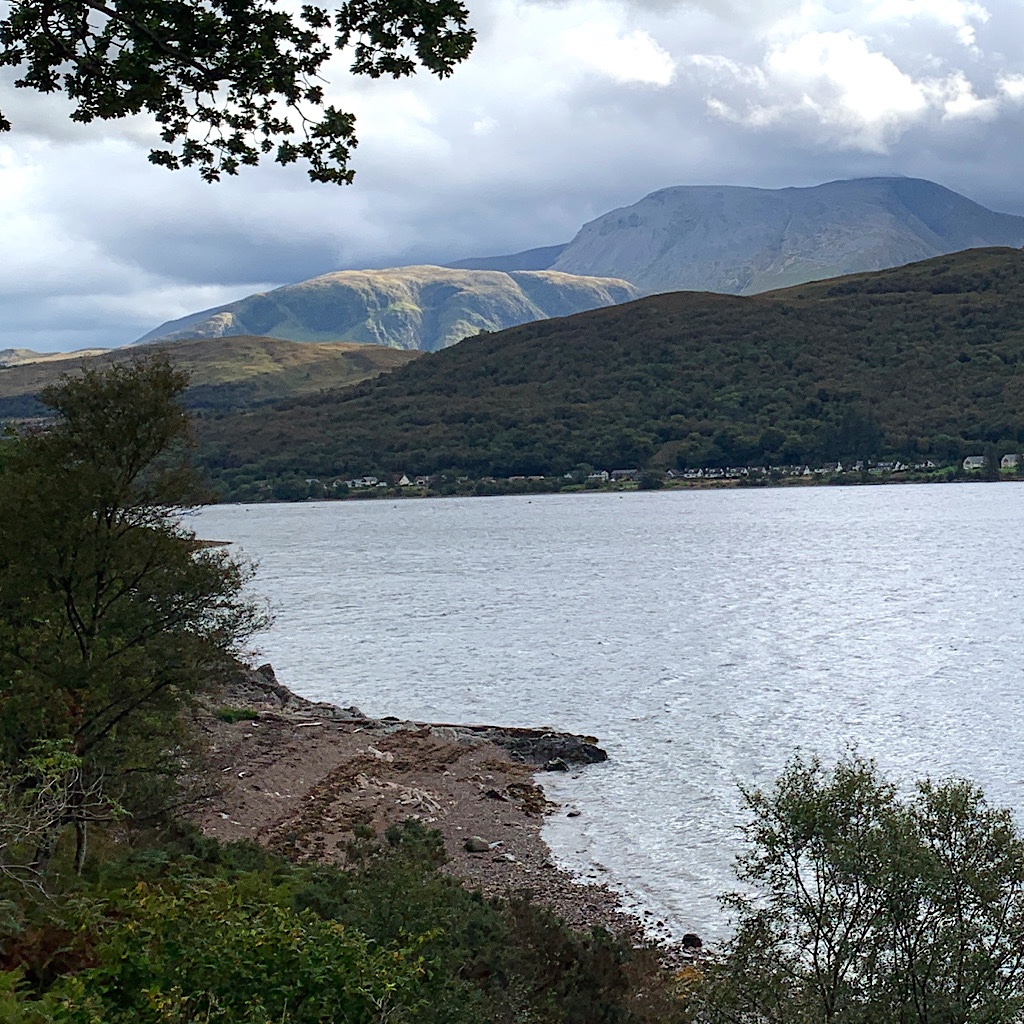
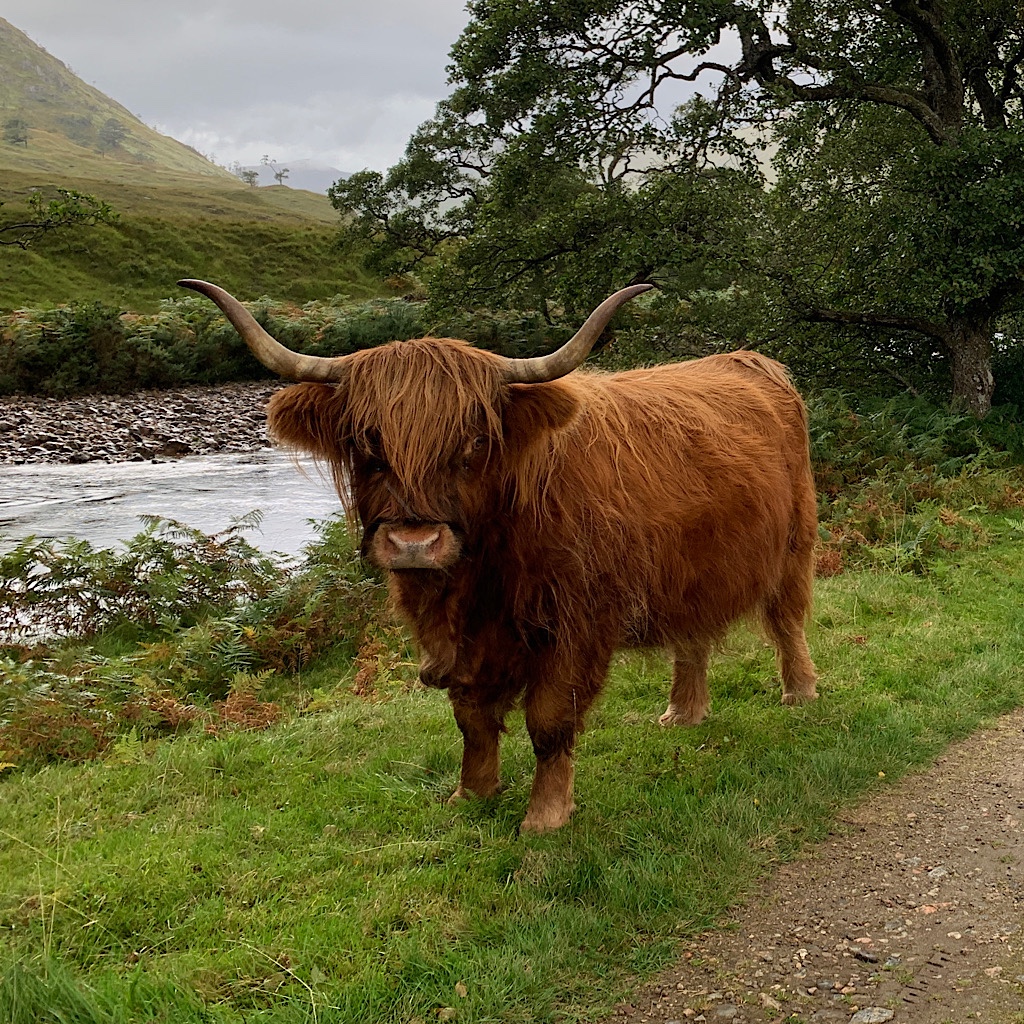
Ferns make up the bulk of the vegetation and shaggy cows with sharp horns graze near the track, hair in their eyes like so many surfer dudes.
It’s not far until we’ll turn north and head up towards Meall na Cuartaige, a Munro above 1,000 meters. We begin to look for a site that checks all the boxes: flat, near water, and out of the wind, a wind really picking up in speed, nearly knocking us down as it gusts.
It’s Ted who spots a site next to the track. It’s only 3, but tomorrow promises a bothy or hut only 14 miles on, so no need to continue. We set just as a man crests the wee hill. It’s his second-to-the-last day heading north to south and after congratulating him, we ask for beta going forward.
He warns of one closed section near Glenfinnen (he ignored) and that Knoydar is much harder than one might expect. As we talk, a huge gust comes and flattens the tent. It snaps back into shape, but it’s hardly a good sign.
“Most people camp near the bothy, but it’s shut.”
The bothy?
“Maybe 50 meters ahead.”
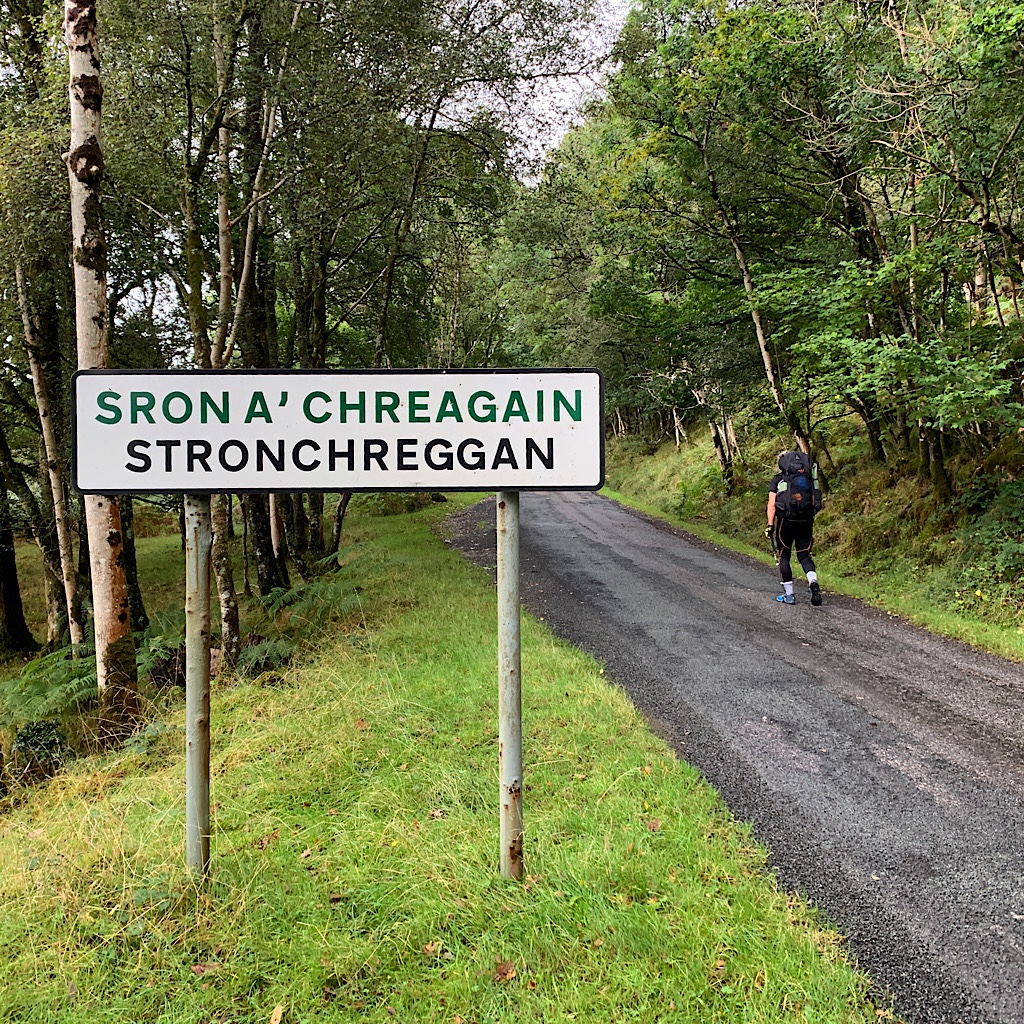
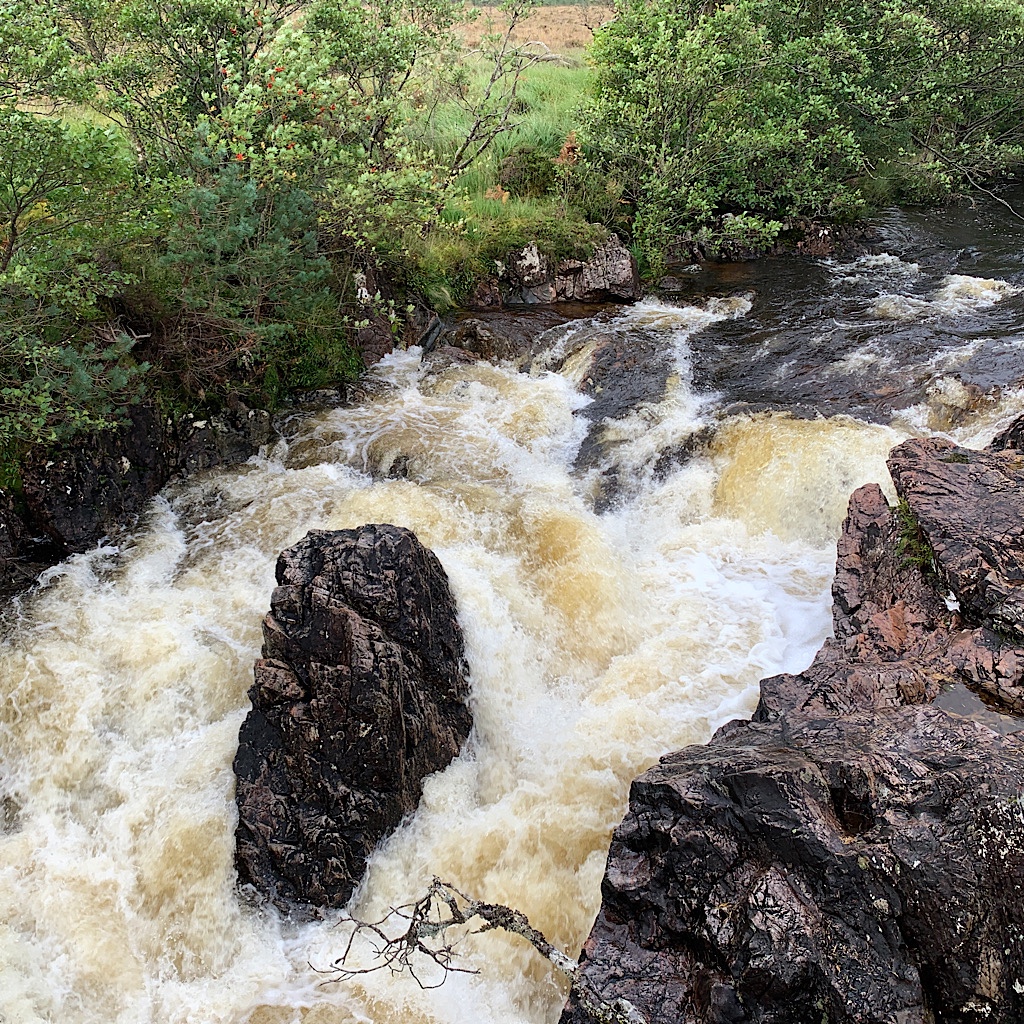
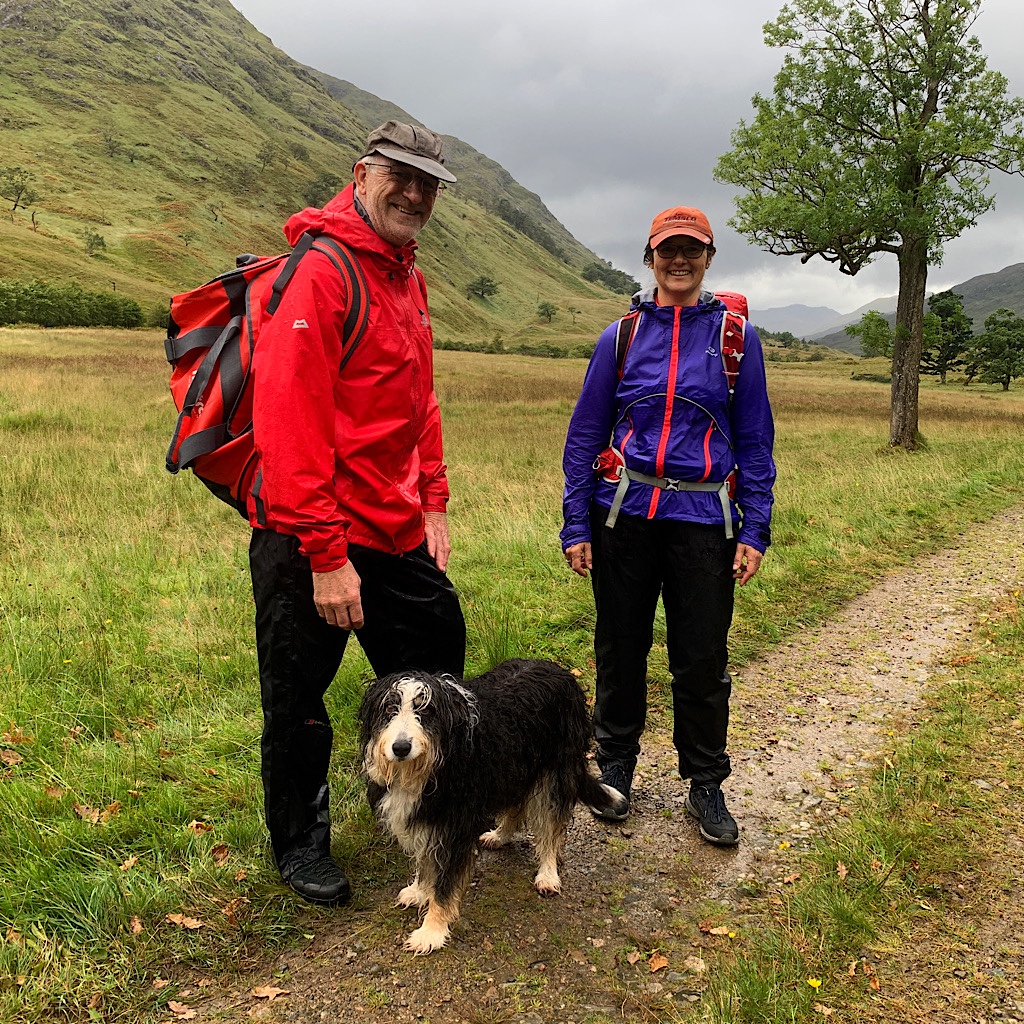
Sure enough, a small stone hut sits in a narrow bend in the trail out of sight. From here, it appears ideal so we decide to simply carry the tent set over there for a sheltered spot. The Big Agnes is as advertised: big – a three person tent I thought a wise choice since it offered enough room to stow wet clothes without getting everything else wet.
We each grab a side, blindly waddling down, then back up. Ted finds a reasonable site, but the gusts get more fierce, threatening to pull the tent out of our grasp.
No place is really large enough, and only one provides shelter, but it straddles a ditch and sits on a bit of wetland. The front door is indeed locked, but a small shed is open on two sides. Inside is puddly, with garbage strewn about. No, we can’t camp here, or dare even lay inside this shed.
So back we go, down to a bridge over a rushing stream and back up to our first spot. But again, the gusts pick up, grabbing at the tent. We hold tight, but the wind is far too strong, pulling it like a sail. We both fall over, partially forced down and partially in hopes of not to losing our shelter altogether.
It’s only a few more steps, but the tent cannot be set and I decide to pack it up out of this wind and try one more time back at the bothy. As we close the poles, I see we bent on in the struggle. It’s not broken and should still work, but it will change the shape some.
So back we go, choosing the swampy bit protected spot as the wind howls. Over the hills beyond the river, the clouds build and I can see the rain coming. We set fast, driving the final stake in before the rain lashes down.
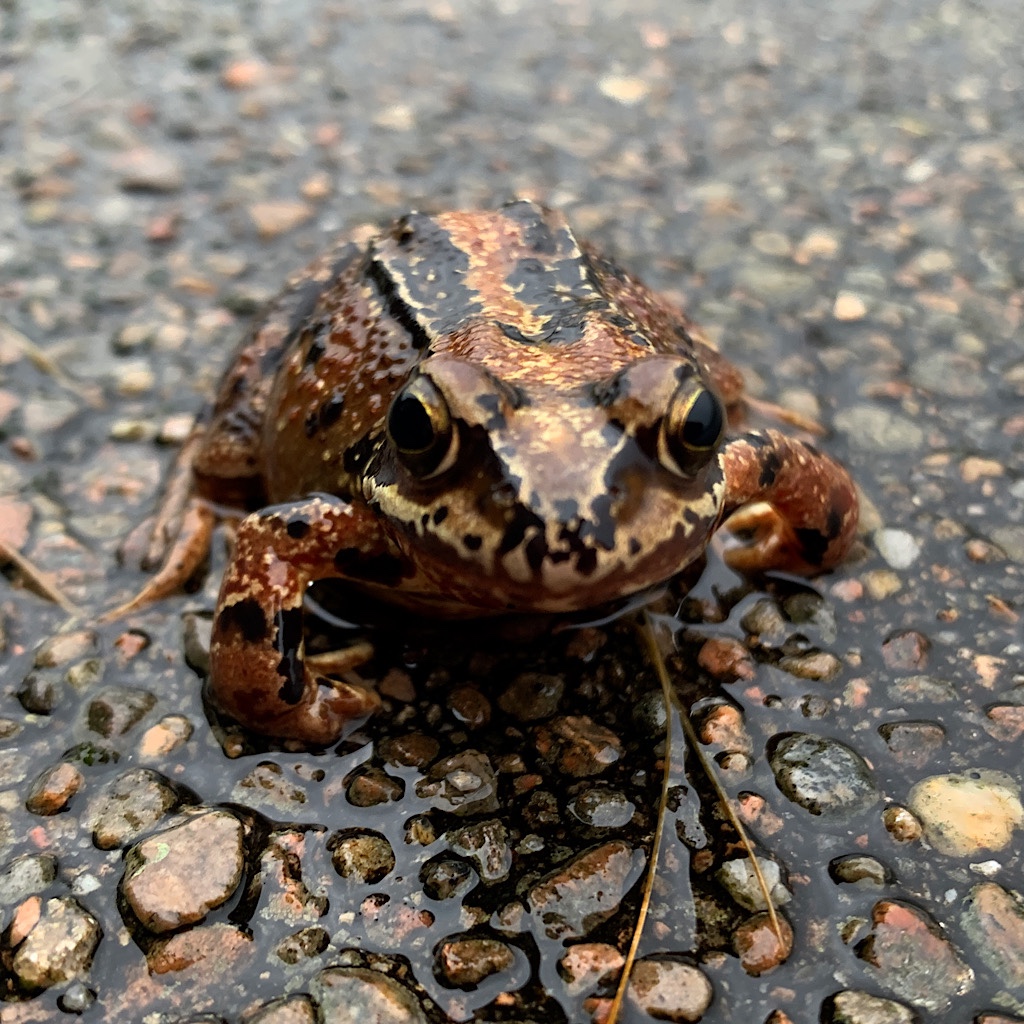
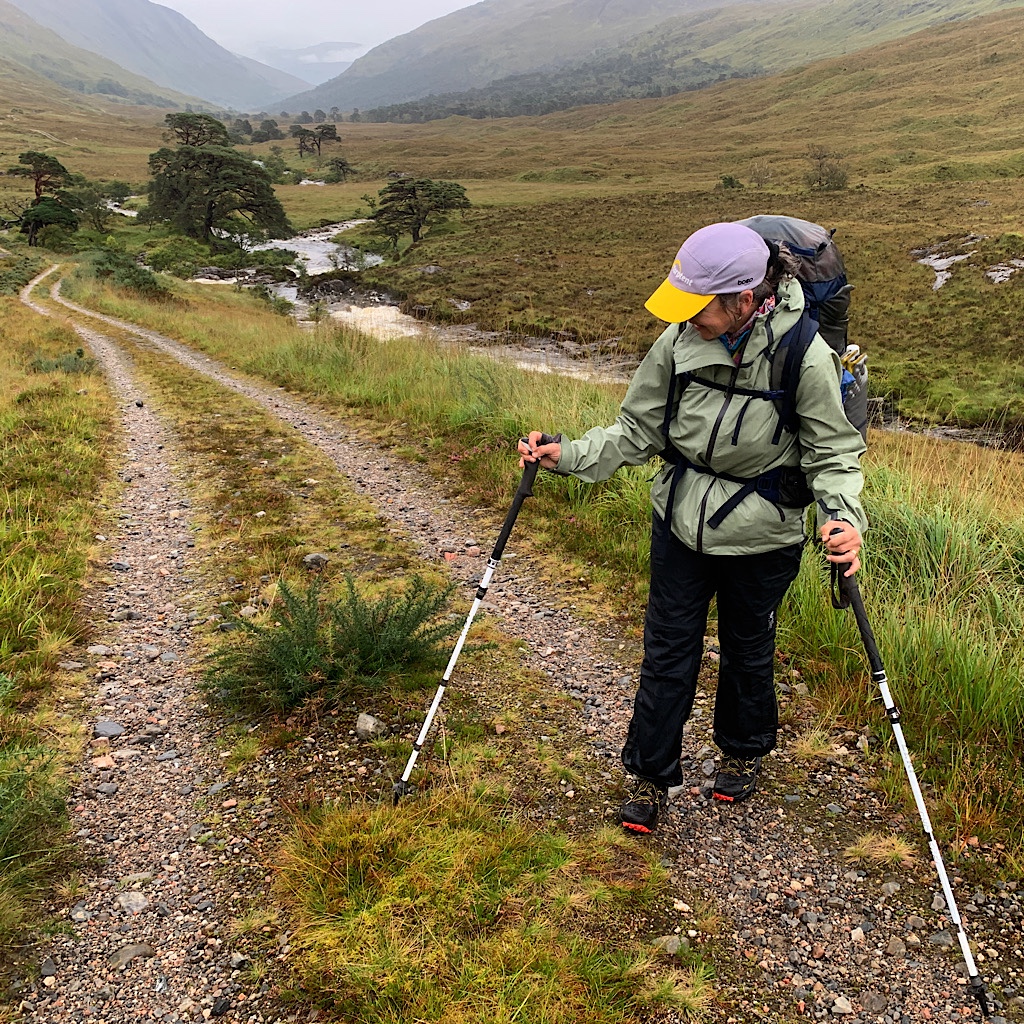
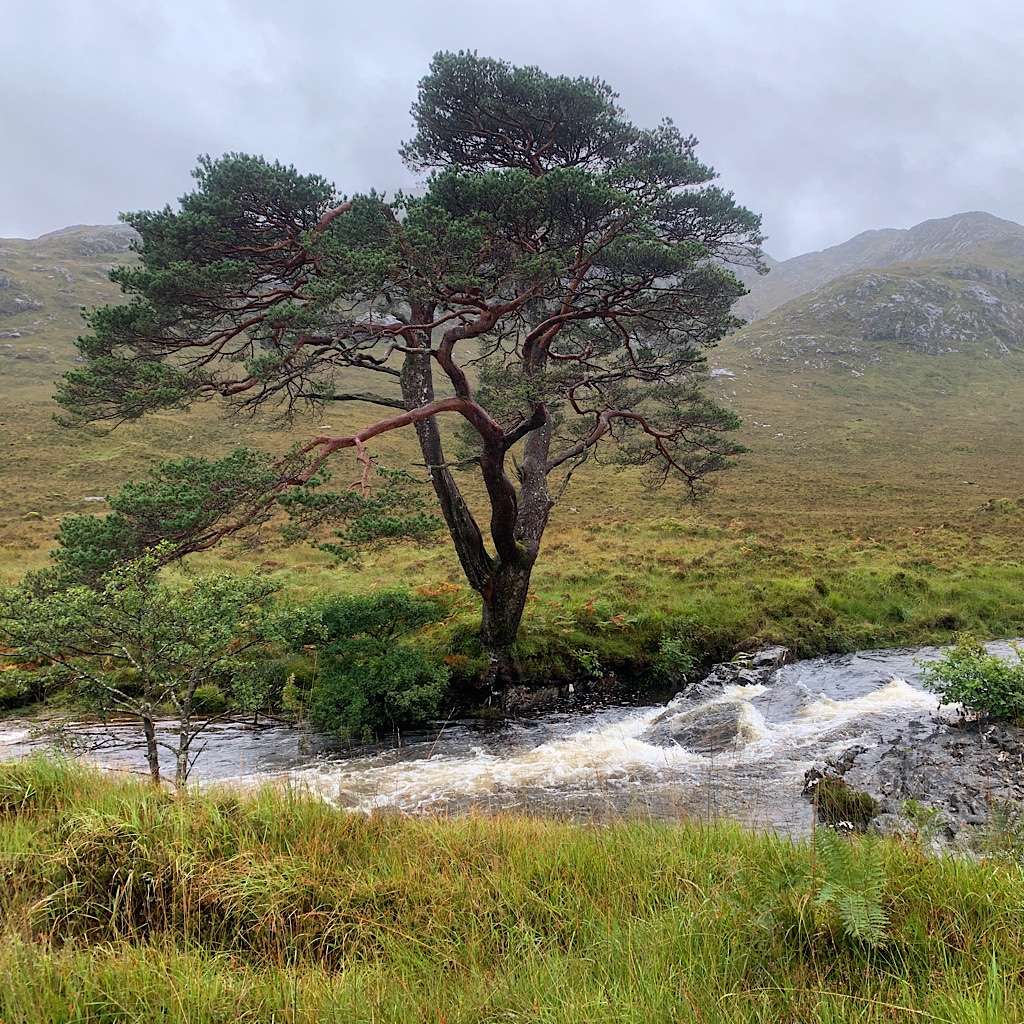
We’re next to the shed and dive in with our bags to stay dry. Someone has dragged logs in here for seats and it’s not too bad. I eventually put on all my rain gear and take one more trip to the crashing side stream to collect water. Ted sets up the cook stove for dinner since trying to get inside the tent now, let alone cook, feels impossible.
It just continues to rain and Ted tells me of the expression, “settling in,” as in “The rain came and settled in for the night.” I try to stay positive as we filter water and make pasta. It’s fast with Ted’s jetboil, and we share the tomato-ey pasta water before digging in. Two chocolate/peanut butter shakes are “pudding.”
Our packs are lighter as we venture back into the rain for our sixth trip to our first site. We carefully lay our wet backs in our individual vestibules, then venture in and remove wet clothes. The tent is indeed a palace with loads of room for the rain gear and we’re all set inside within minutes.
Rain drips loudly on the nylon and competes with crashing falls into rapids. It’s pitch dark by 7:30 and I begin to feel tired as I cuddle into Big Greenie.
Yes, this much rain is a bit depressing, but it was a gorgeous walk to this point and a wonderful start, considering how lucky we were to get the tent set before it rained, and to have a shed with a tin roof keeping us dry as we ate.
I’m warm and full and hoping the rain moves on by morning.
And no matter what happens, a bothy complete with power and a teapot is only 14 miles on.
